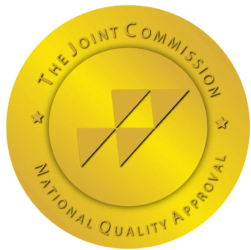There has been a lot of debate over the years about what is or is not a drug, and about the varying degrees to which these substances may or may not be addictive. The classifications seem to range from substances that are not at all addictive regardless of the frequency of use, all the way up to stuff that could send you down the spiral after just a few uses. The tricky part of this is measuring the addictiveness of a substance because there is no preset scale or predetermined method for doing so. When we want to measure how spicy something is we have Scoville units. When we want to know how bad an earthquake was we use the Richter scale. Unfortunately, no such unit of measurement exists for the addictiveness of a thing. British addiction psychiatrist David Nutt along with a team of researchers and a panel of experts created a list of the top five substances most likely to become habit-forming using the following criteria:
- The extent to which the drug activates the brain’s dopamine system
- How pleasurable people report the drug to be
- The degree to which the drug causes withdrawal symptoms
- How easily a person trying the drug could become hooked
- How much physical and cognitive harm is caused by the drug
- The street value of the drug
While certain aspects of this scale are certainly debatable, this is what the team came up with in terms of the addictiveness of a substance. Not the likelihood of an individual to become addicted.
- NICOTINE
Did anyone NOT see this coming? Nicotine is the highly addictive substance that is found in any and all tobacco products from cigarettes and cigars to chewing tobacco. This is the single most common addiction in America, having affected nearly two thirds of the population at some point in their lives.
- BARBITURATES
These are any drug from the sedative (anxiety reducing) or sleep-inducing class of pharmaceuticals. One of the oldest classifications of drugs, this group includes phenobarbital and secobarbital. These drugs act as a central nervous system depressant and can produce a wide range of possible effects ranging from sedation to death.
- COCAINE
The 80’s revolved around it. Eric Clapton and The Grateful Dead have written songs about it. Maybe that’s because cocaine is the third most addictive substance on earth. Cocaine interferes with the brain’s output of dopamine, basically resulting in your feel good sensors constantly being stuck in the “on” position. This results in abnormal activation of the reward pathways in the user’s brain.
- ALCOHOL
An addiction to any form of alcohol can have lifelong, irreversible effects on the mind and body. Like cocaine, it interferes with the brain’s output of the feel-good chemical known as dopamine. This 100% legal substance boasts an annual death rate of over 80,000 people each year in the United States alone!
- HEROIN
This nasty substance ranked an outrageous 2.5 out of a total of 3 points on Nutt’s addiction scale. One in four individuals who try this opiate become addicted to it. The exceptionally dangerous part about heroin is that the dosage needed for death is only five times greater than the dosage required to get high, and as you become addicted to something your tolerance increases. I’ll leave the math to you.
I will happily concede that there are gaps in the scale, such where does heroin stand when stacked against other opioids? Three out of the five substances on this list are perfectly legal. If “heroin” was changed to include pharmaceutical opioids, that would make four of these incredibly dangerous substances perfectly legal. That fact aside, addiction to one or more of these drugs is very serious. The detox process needs to be gone through with a trained, caring professional staff that is trained to handle the nutritional, physical, and psychological aspects of assisting you in getting your life back together. Visit our website and look into our various detox and residential treatment programs and please, let us help you overcome your addiction and get your life and your health back.





